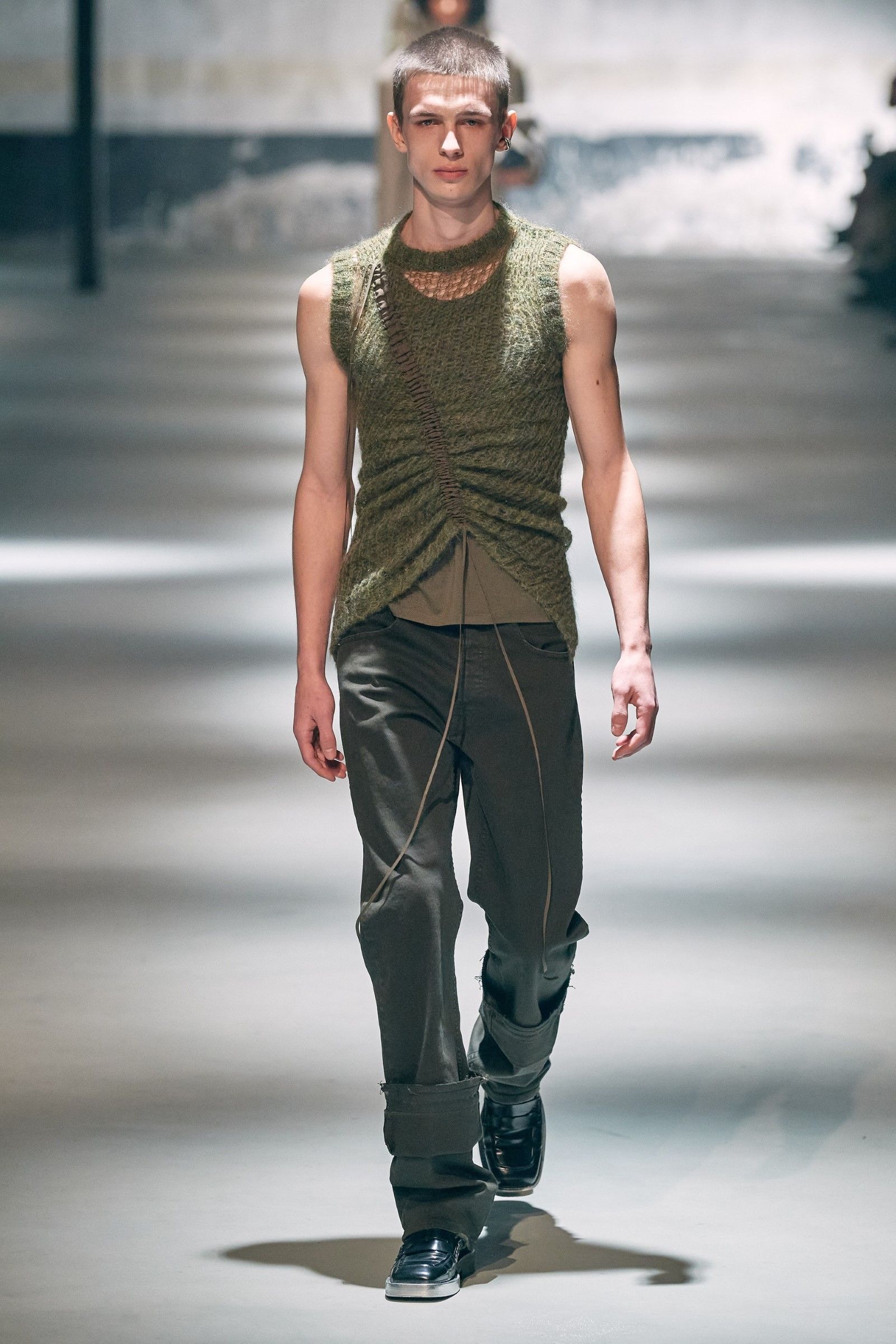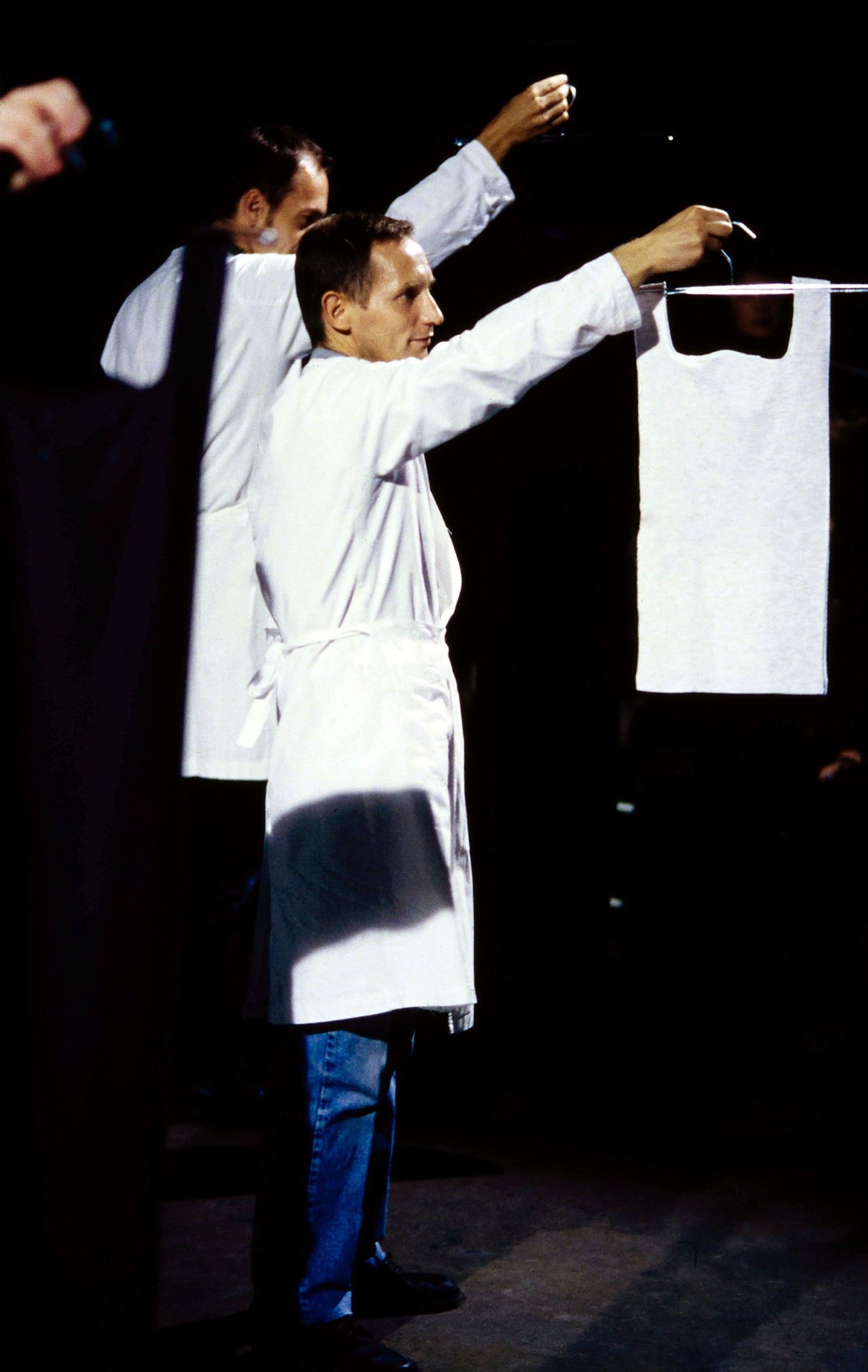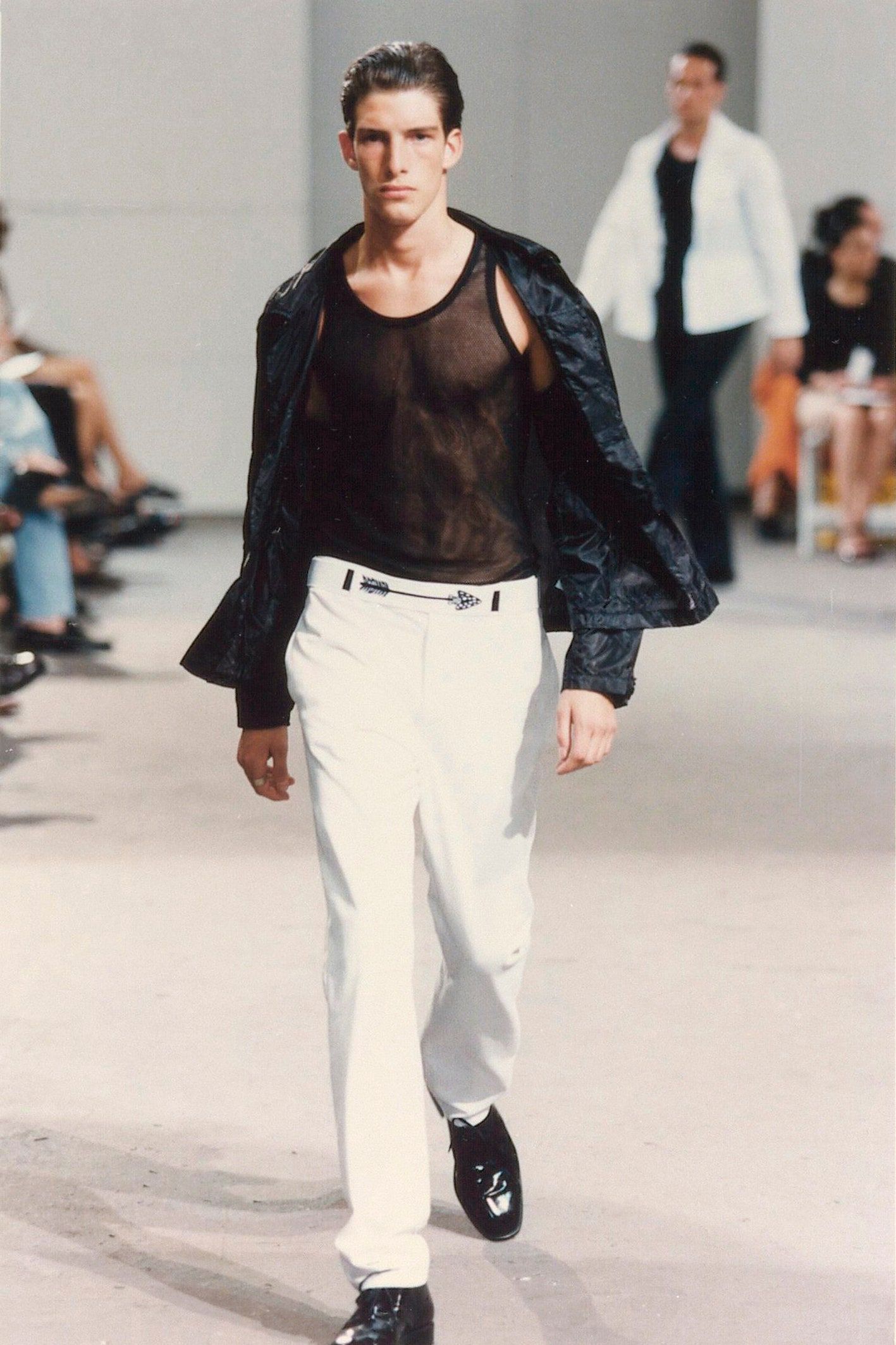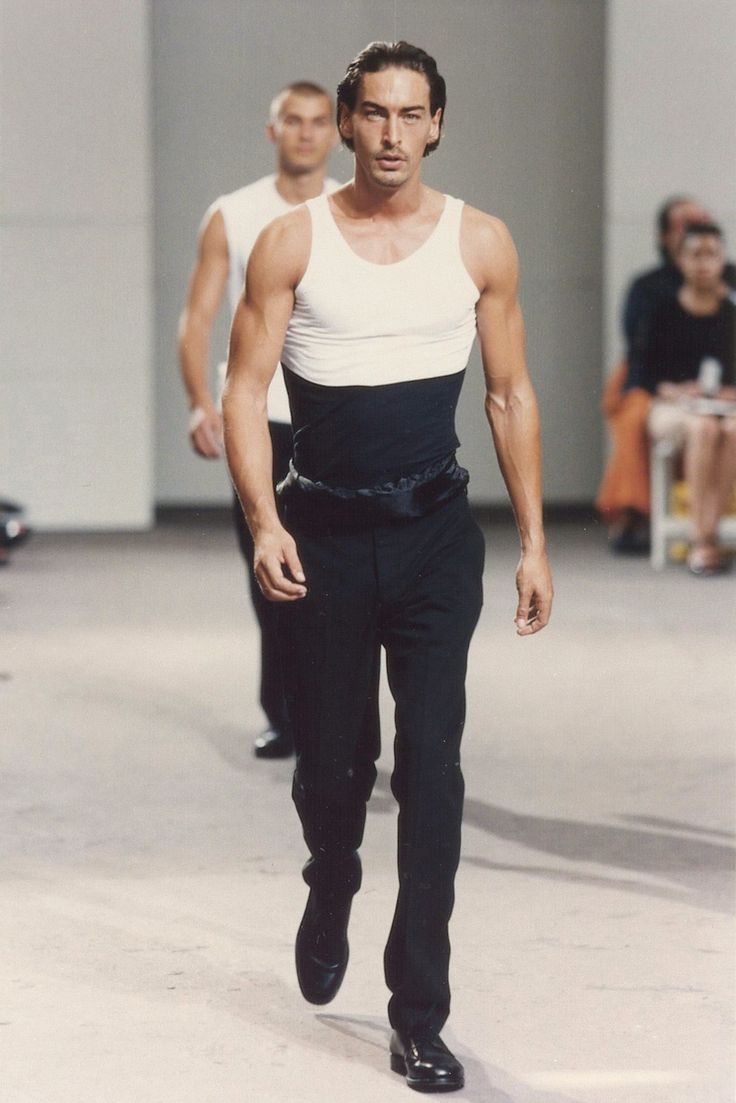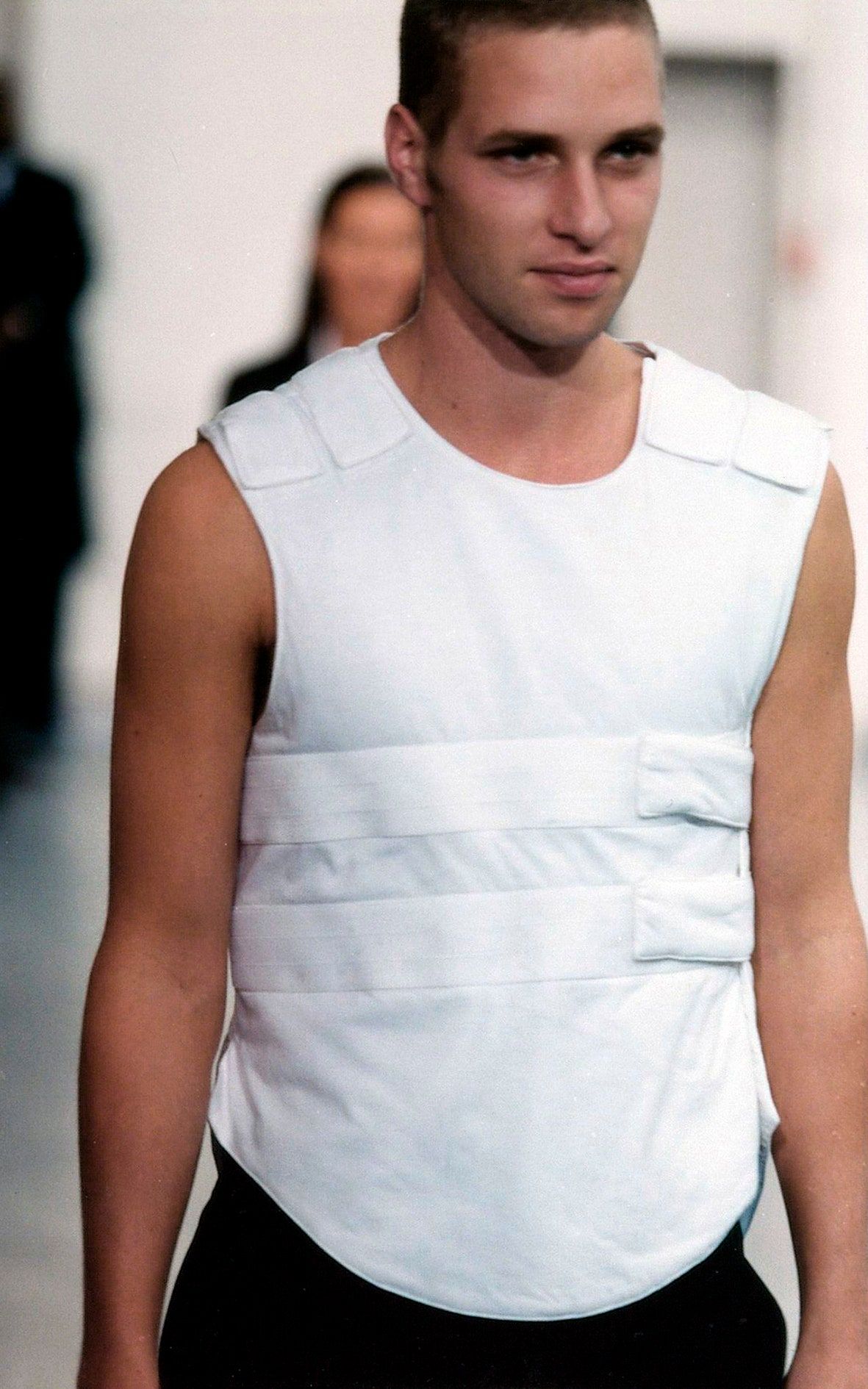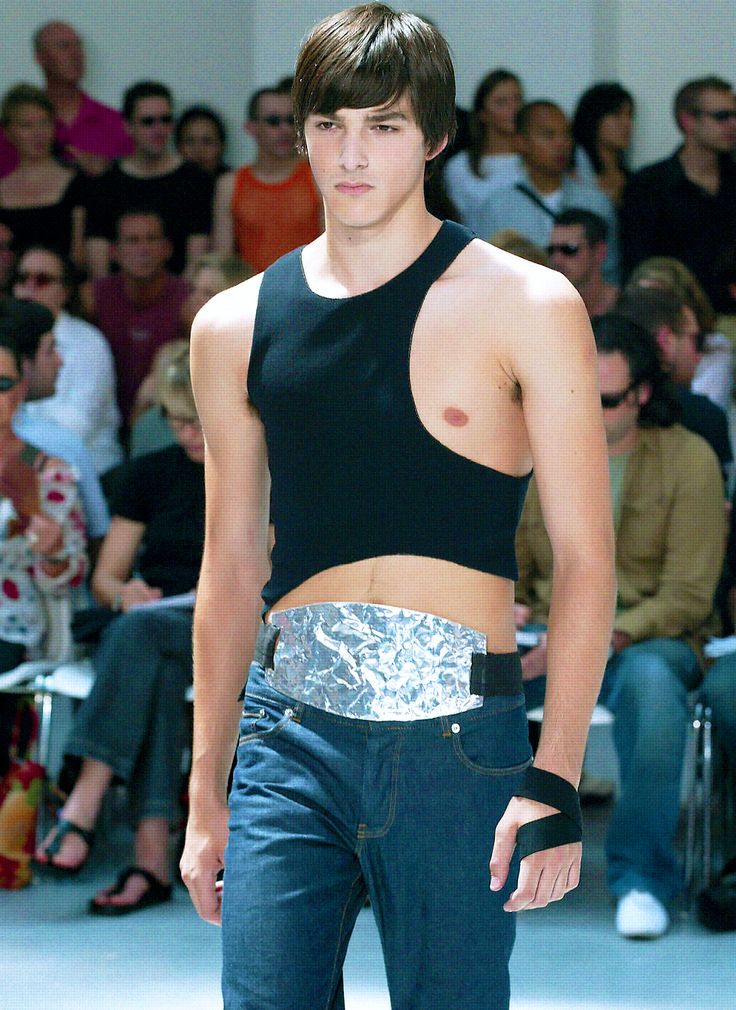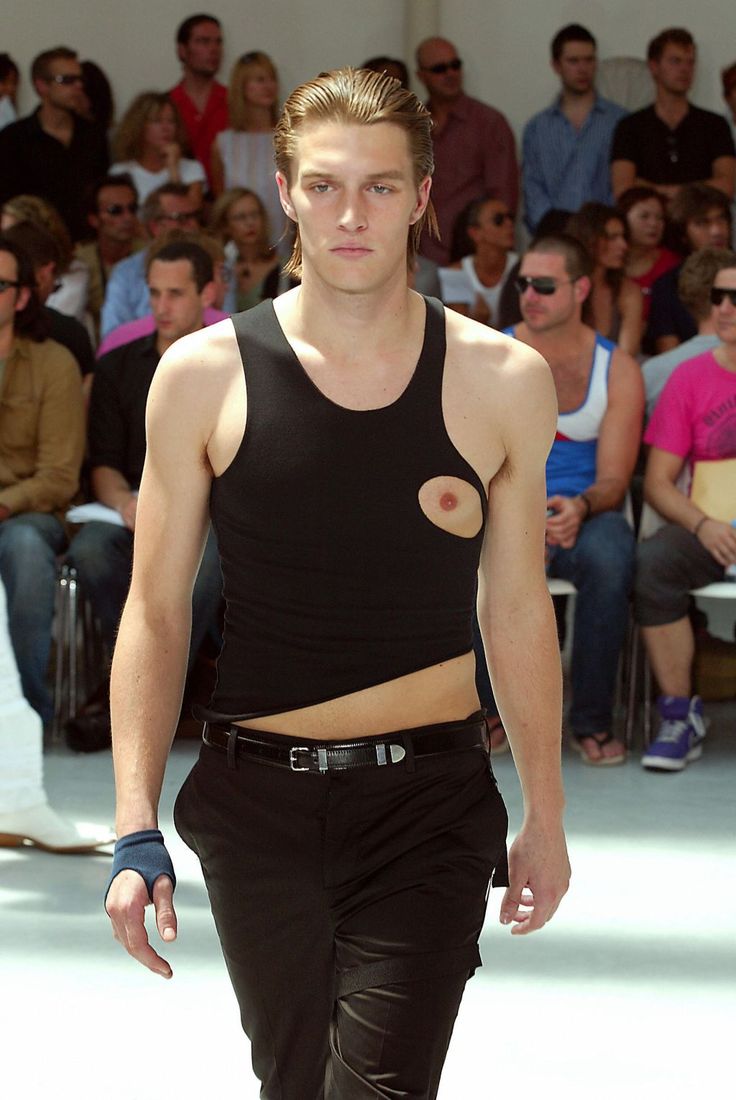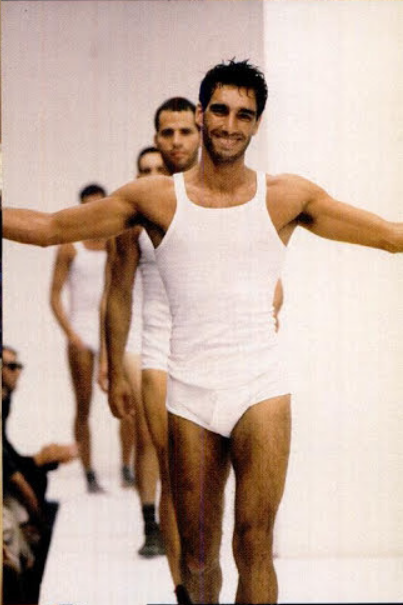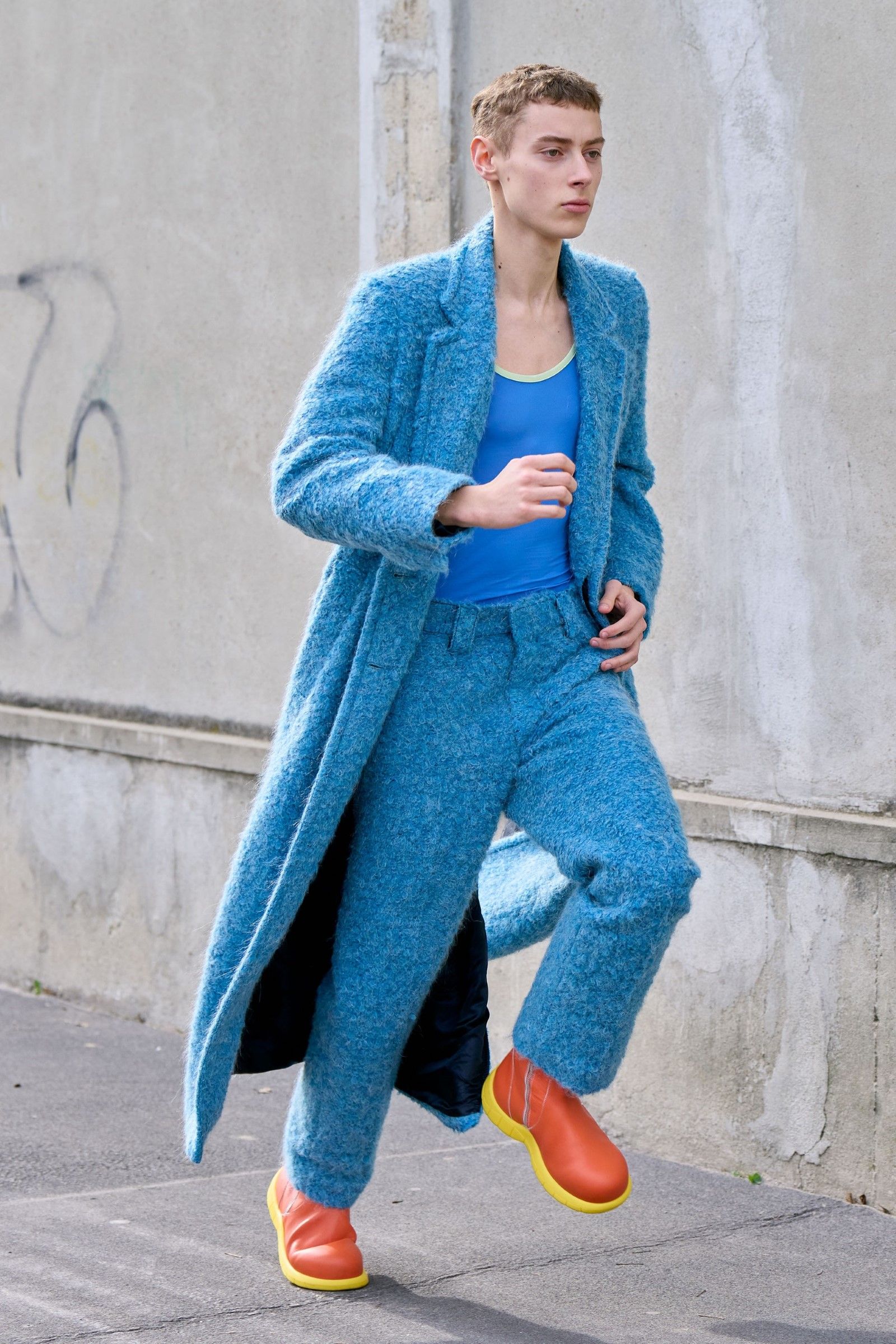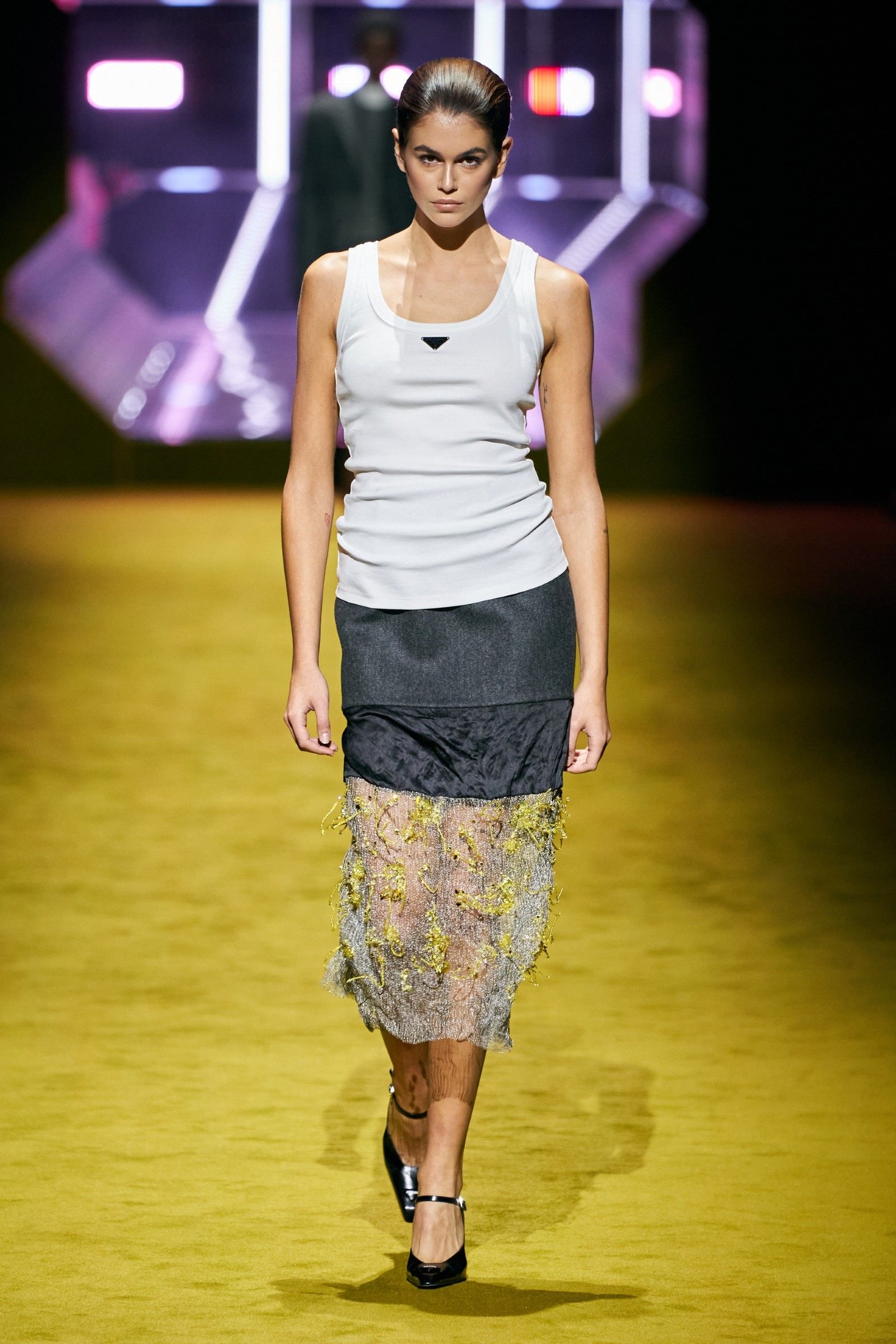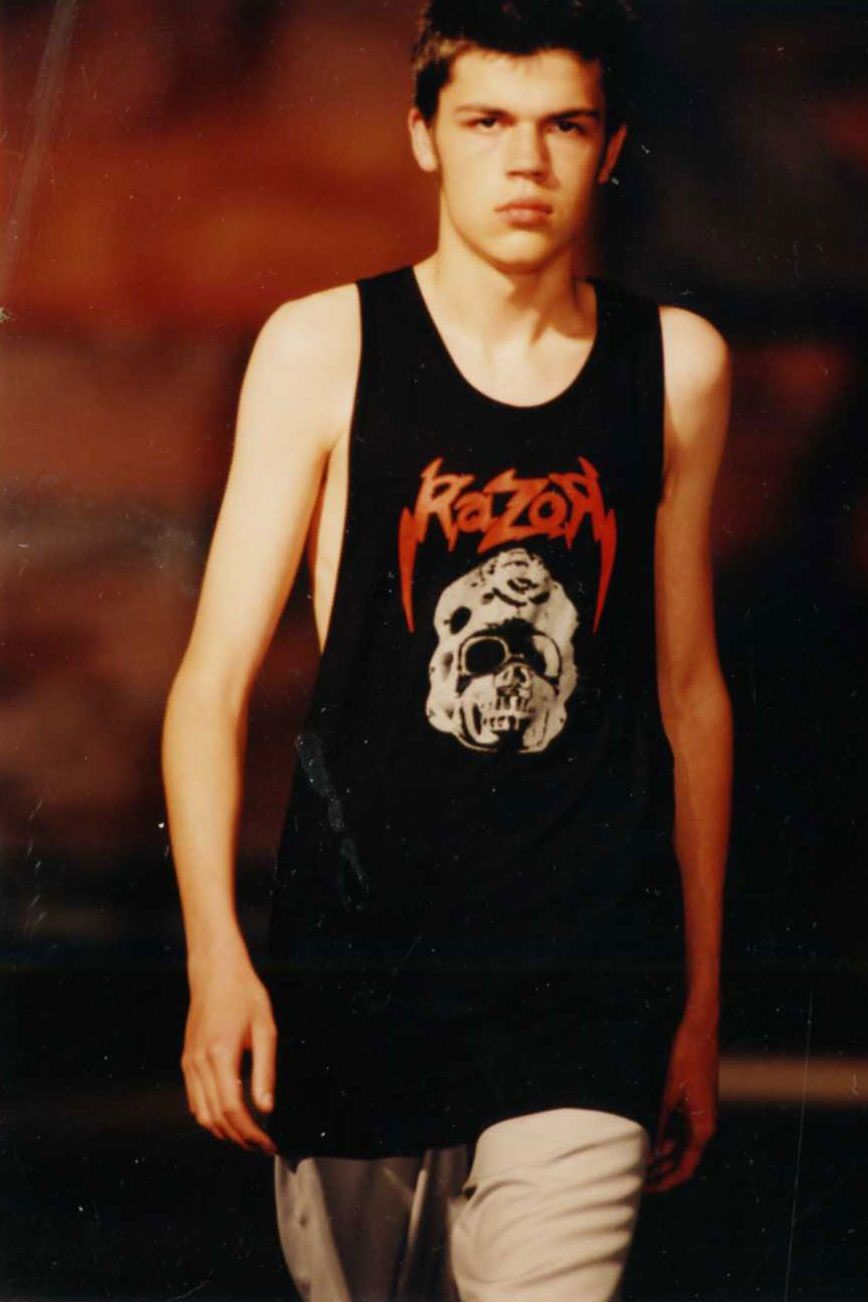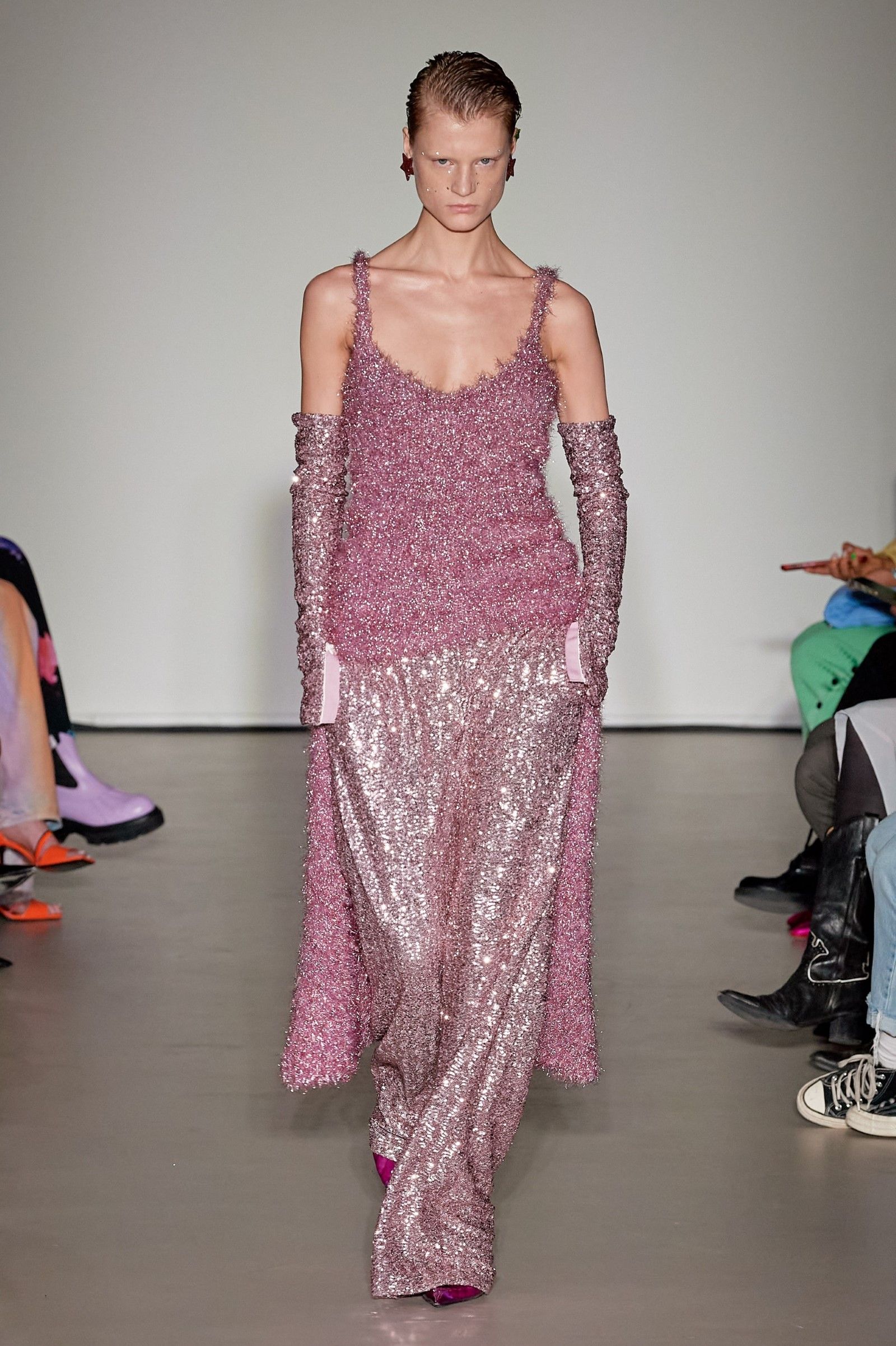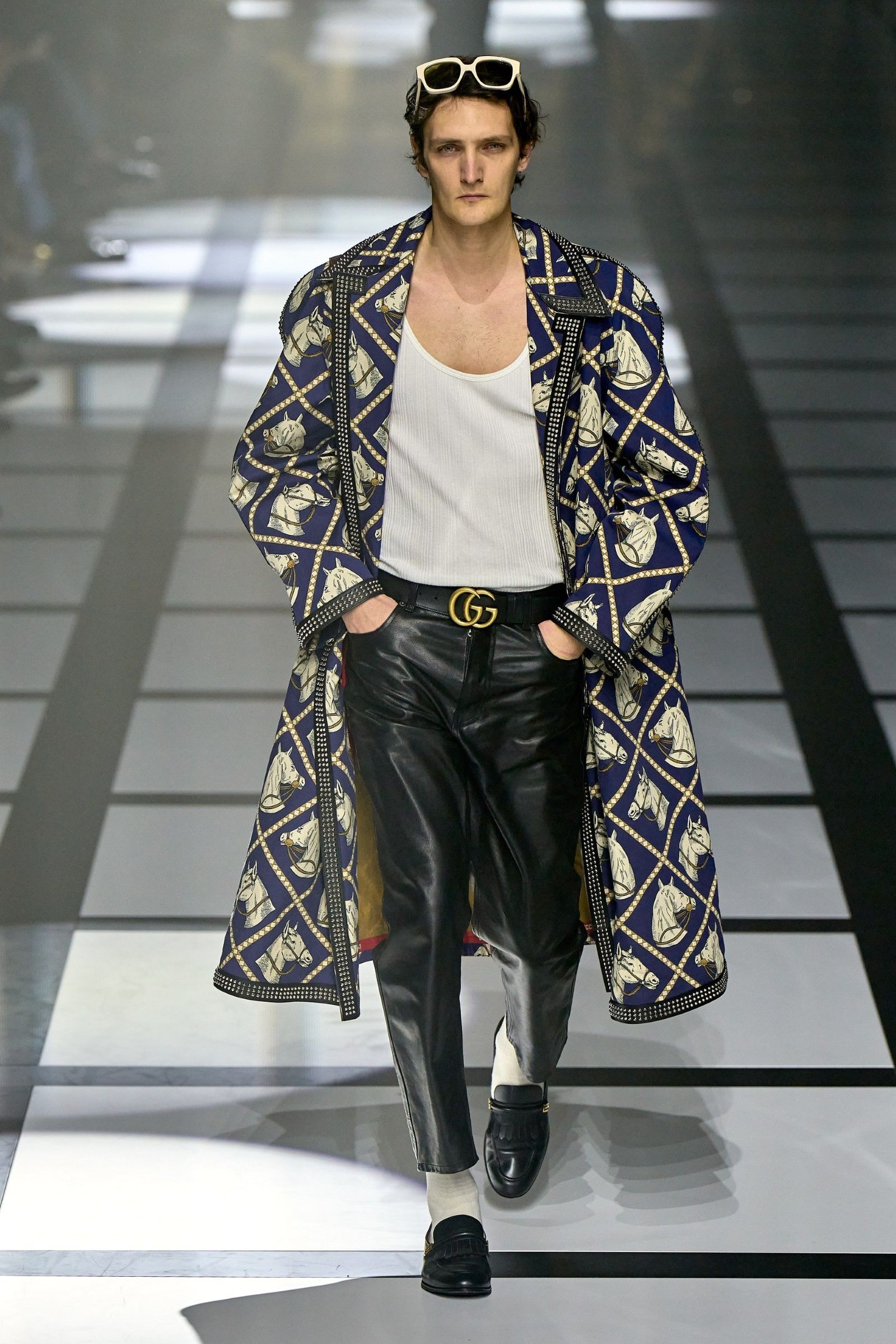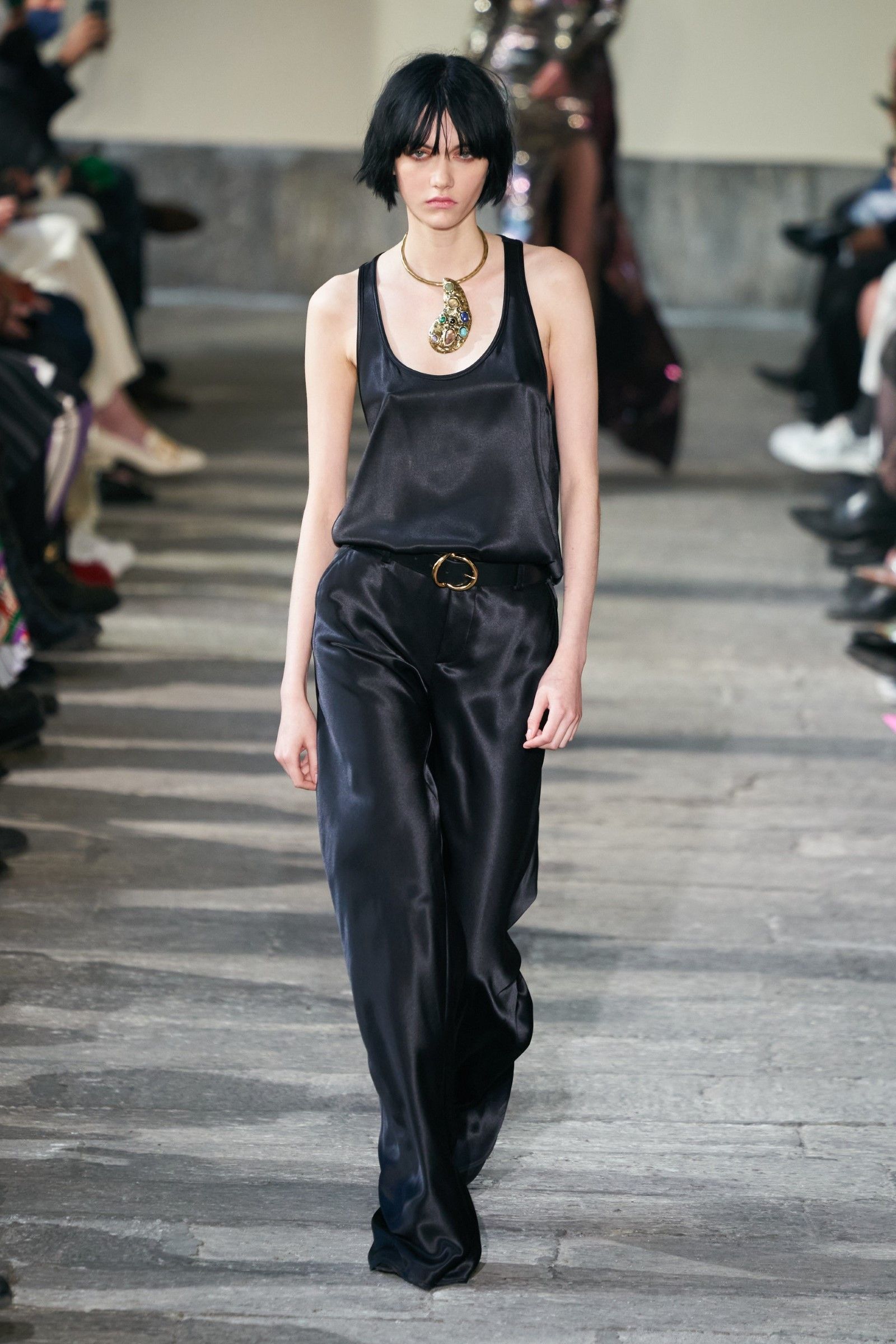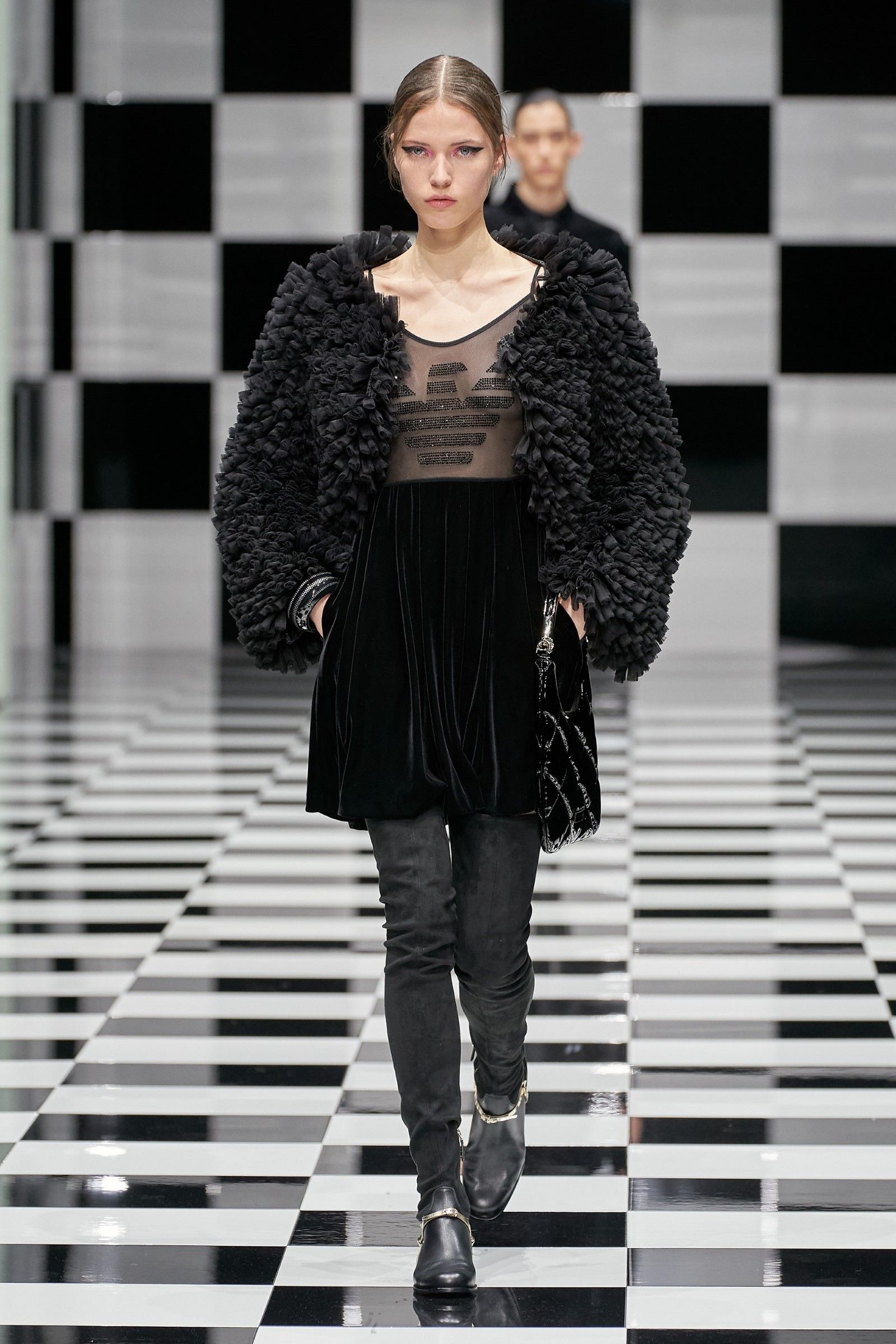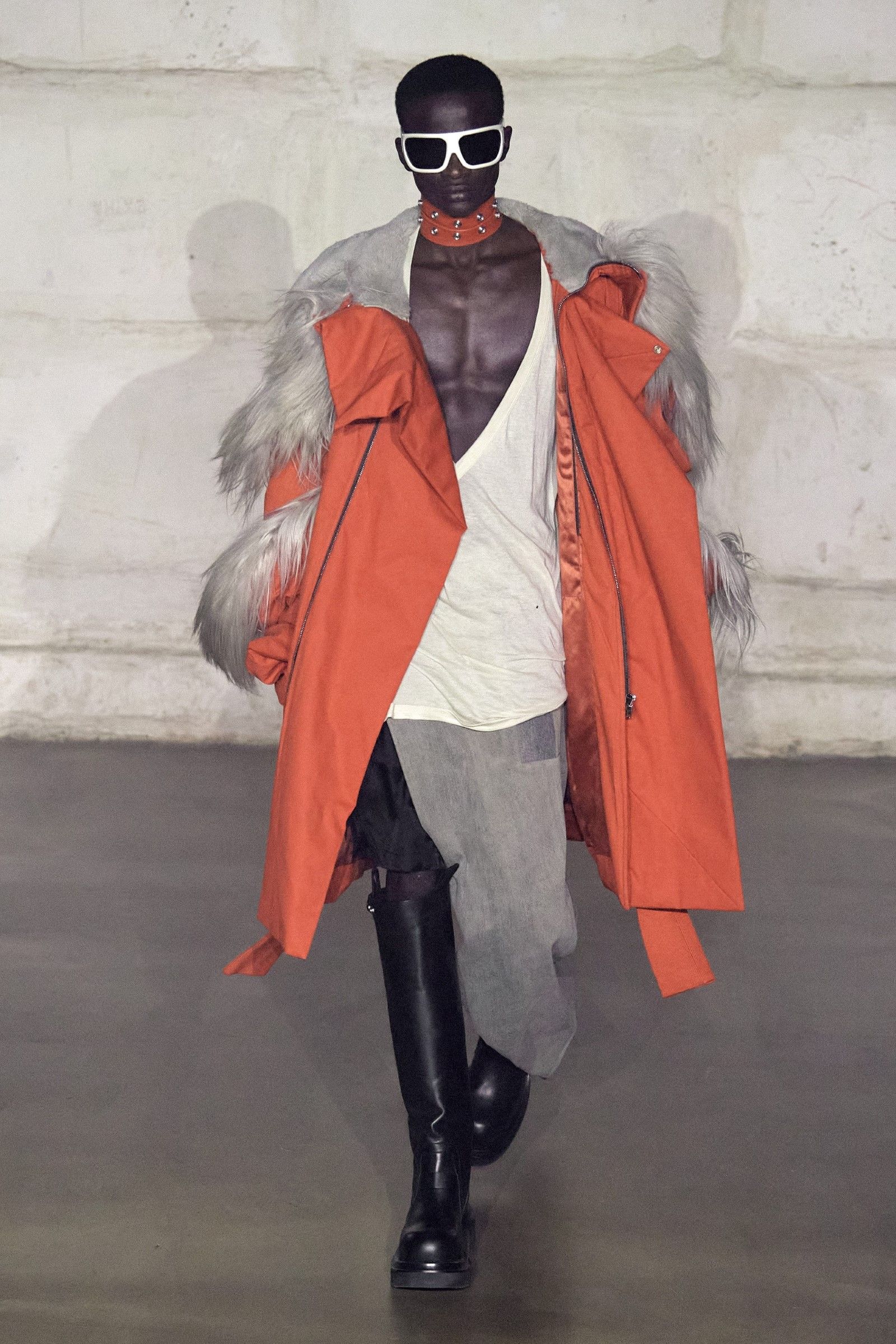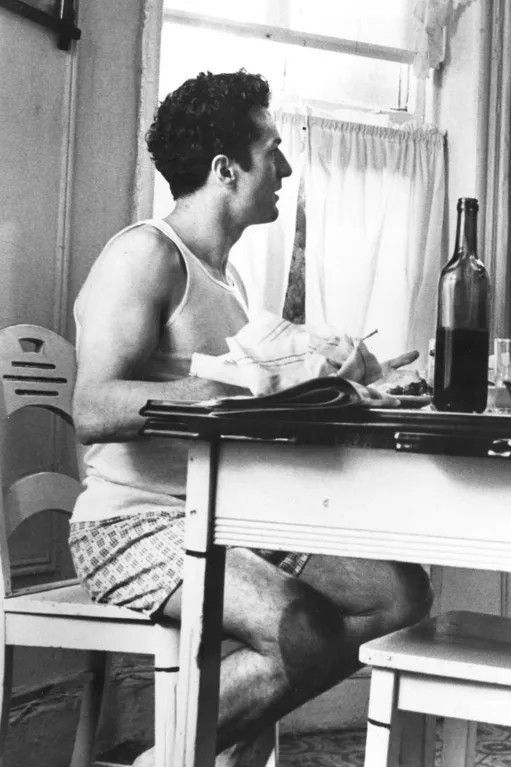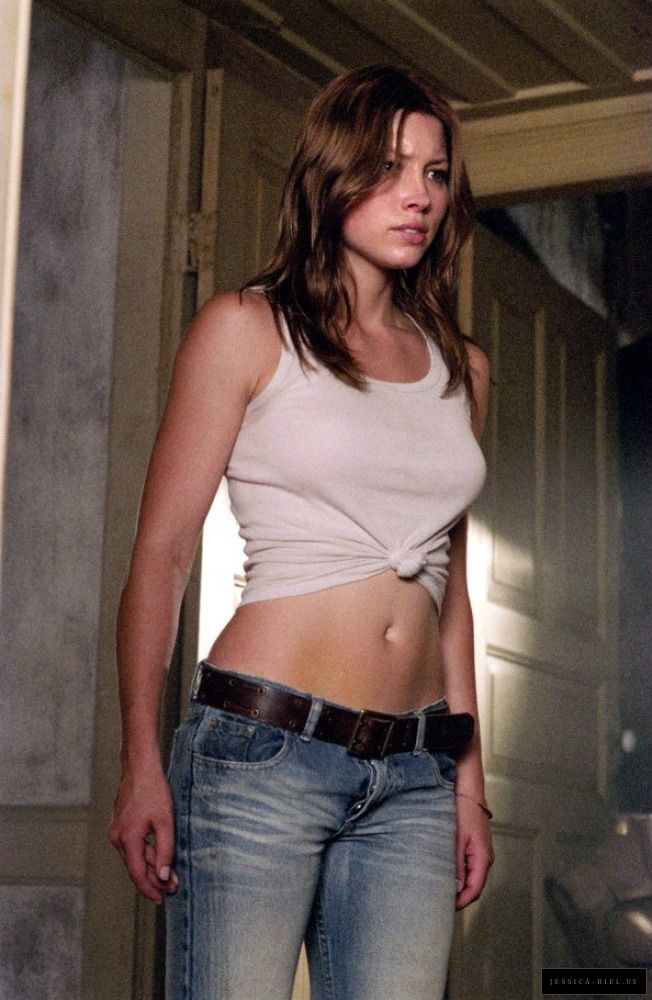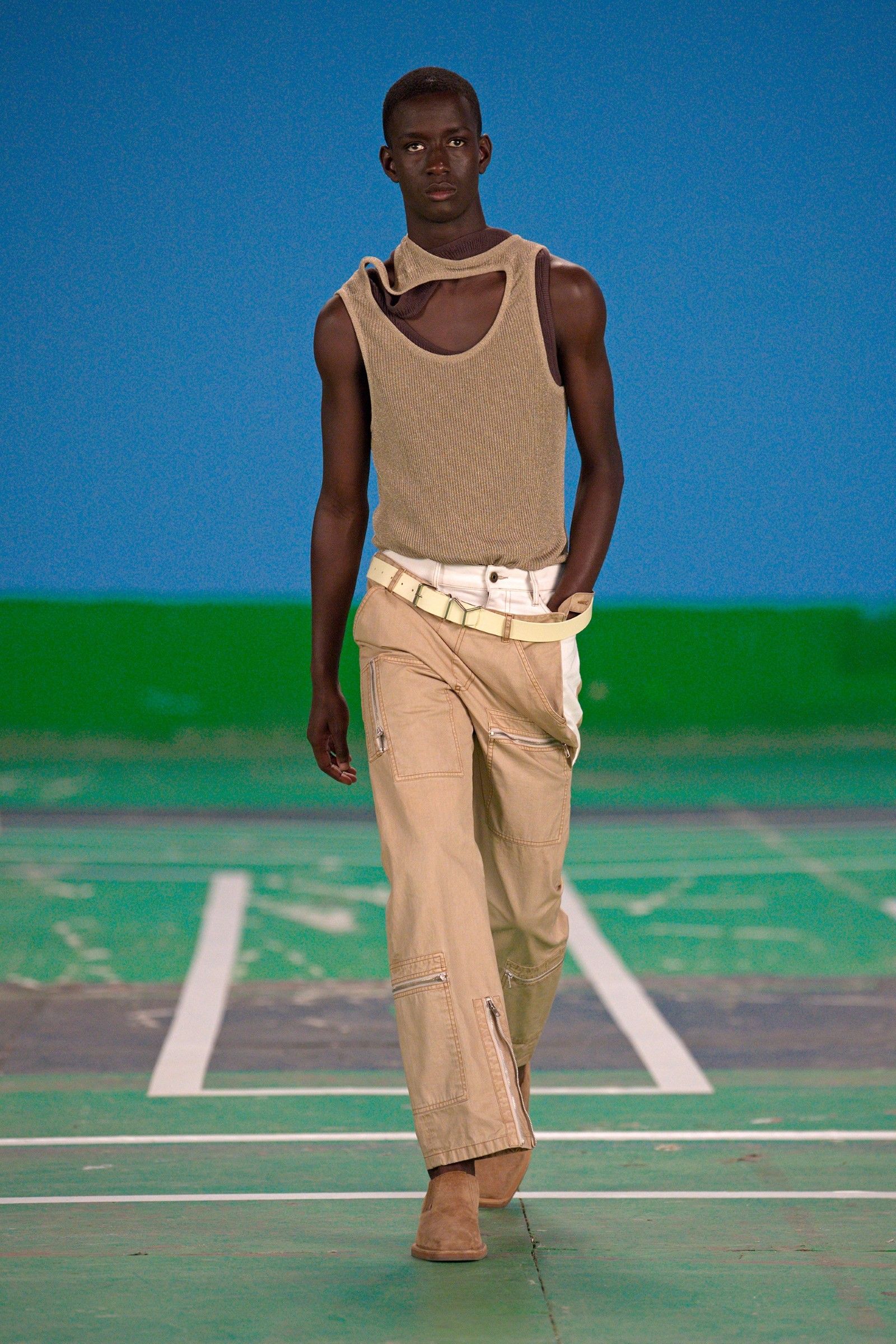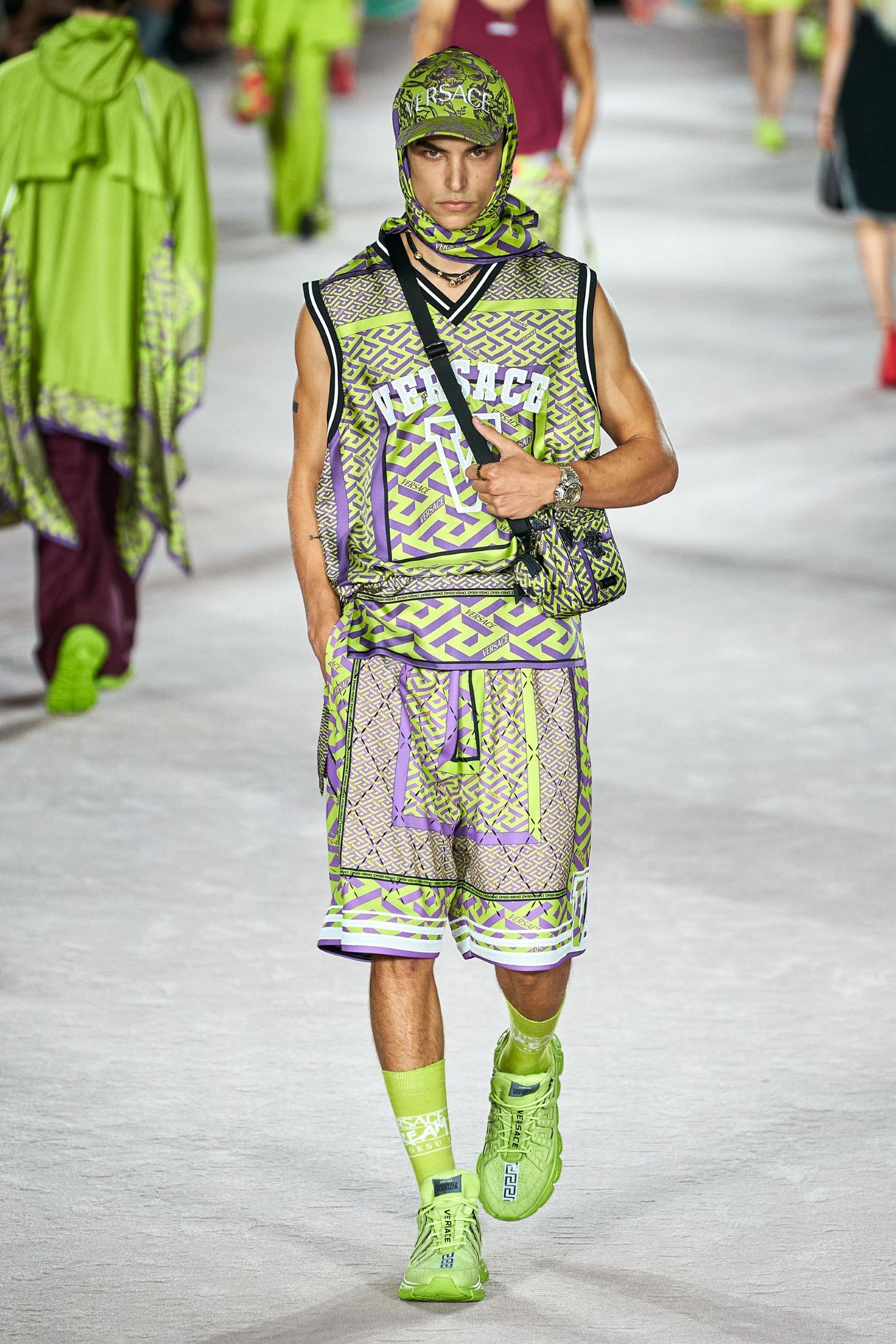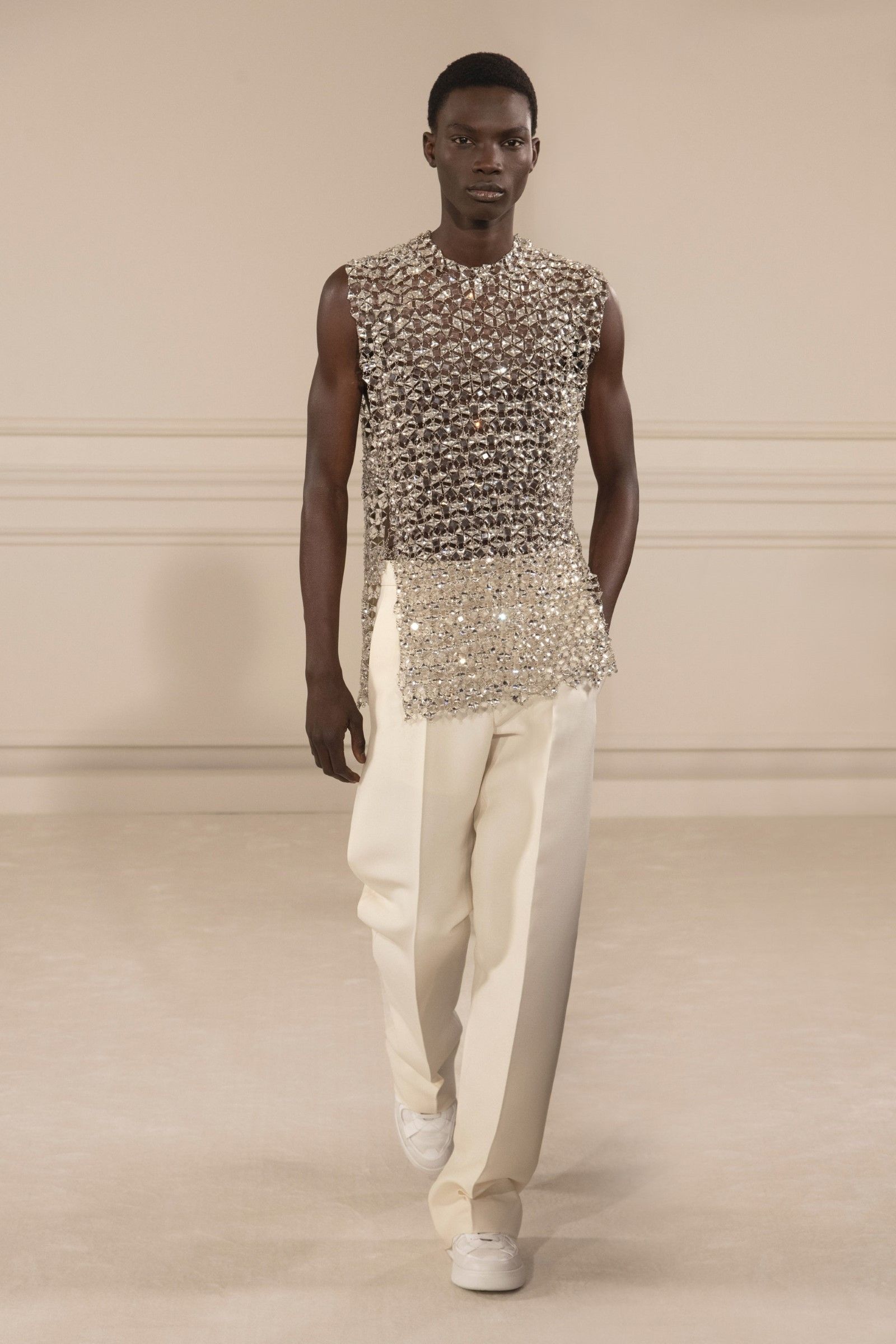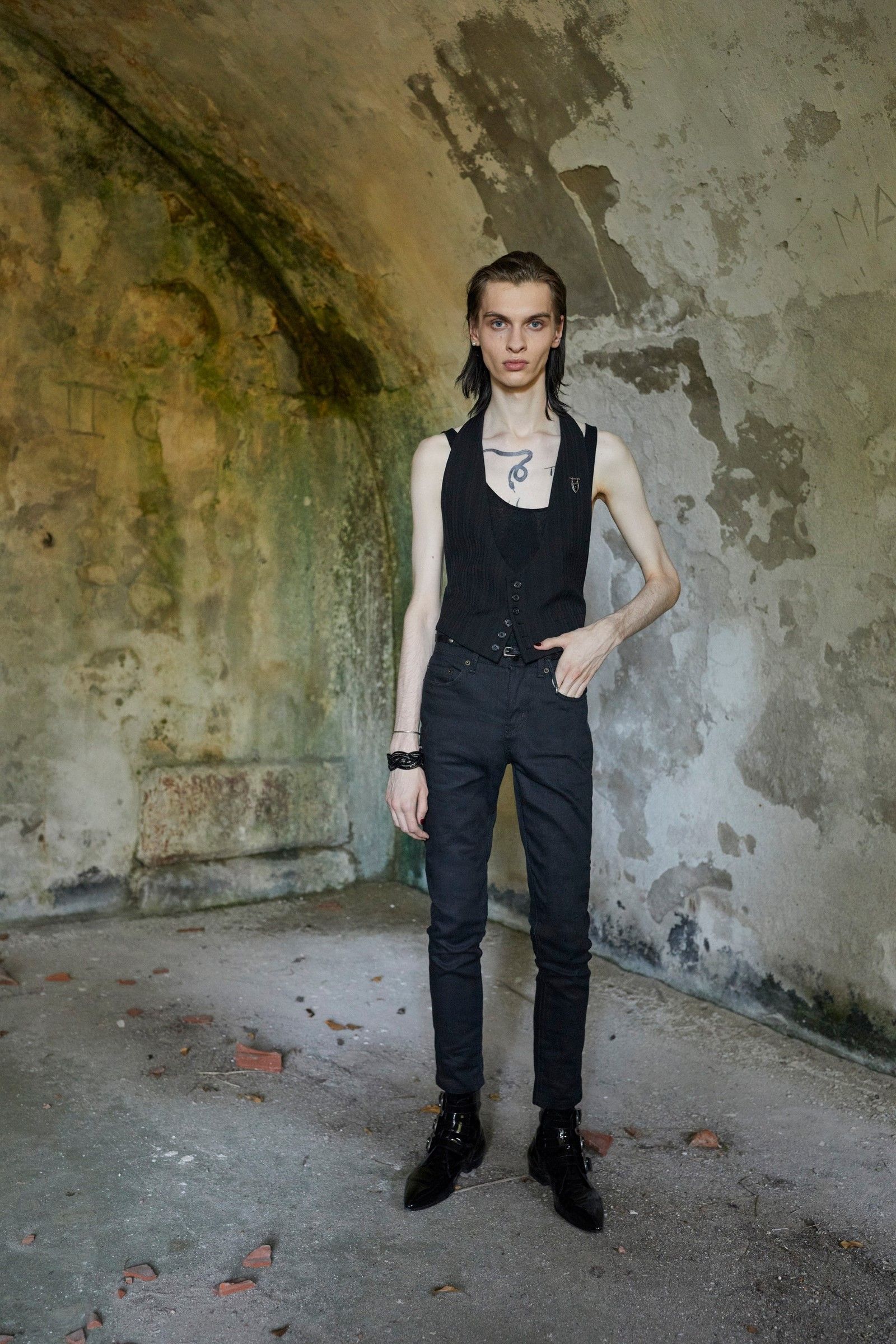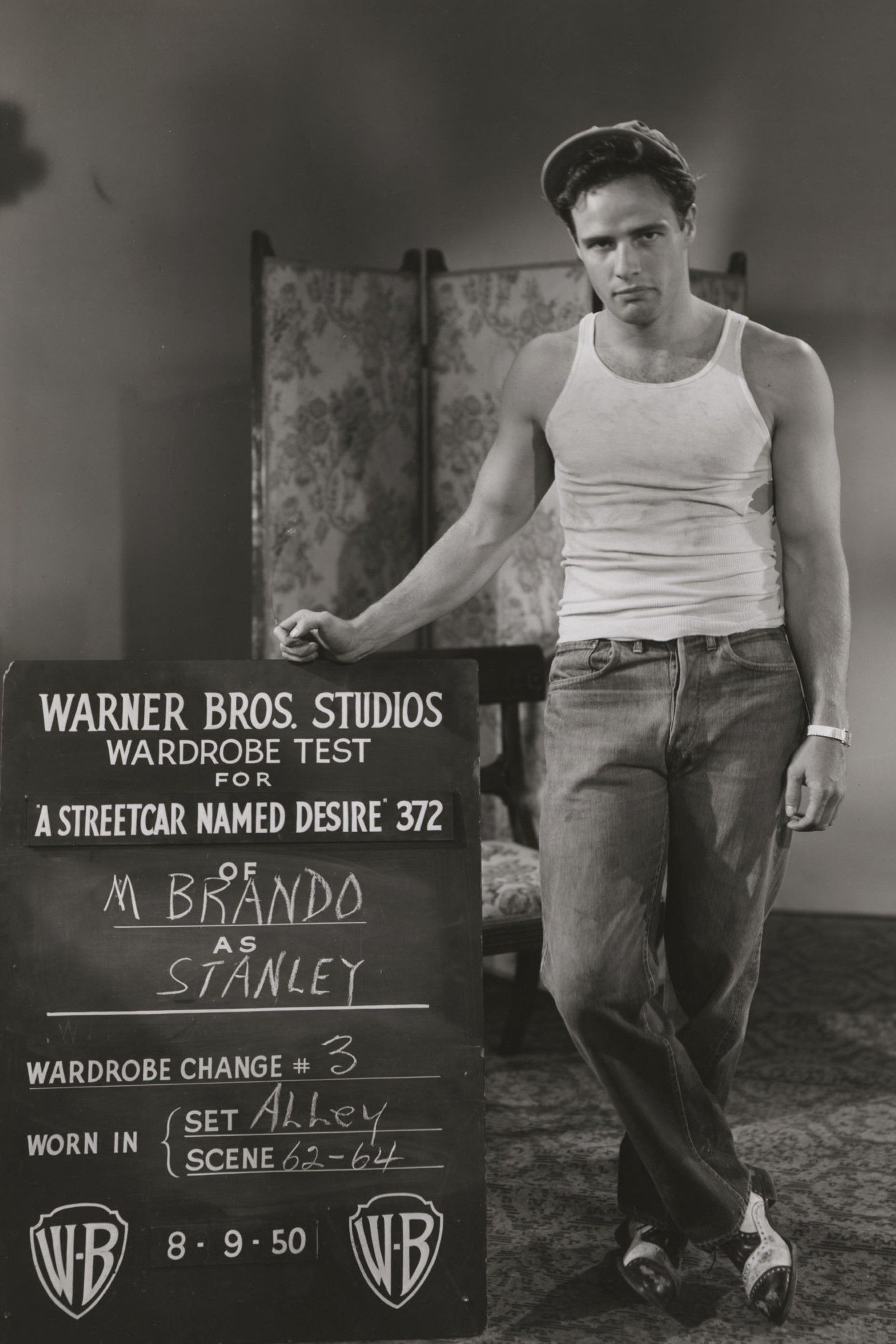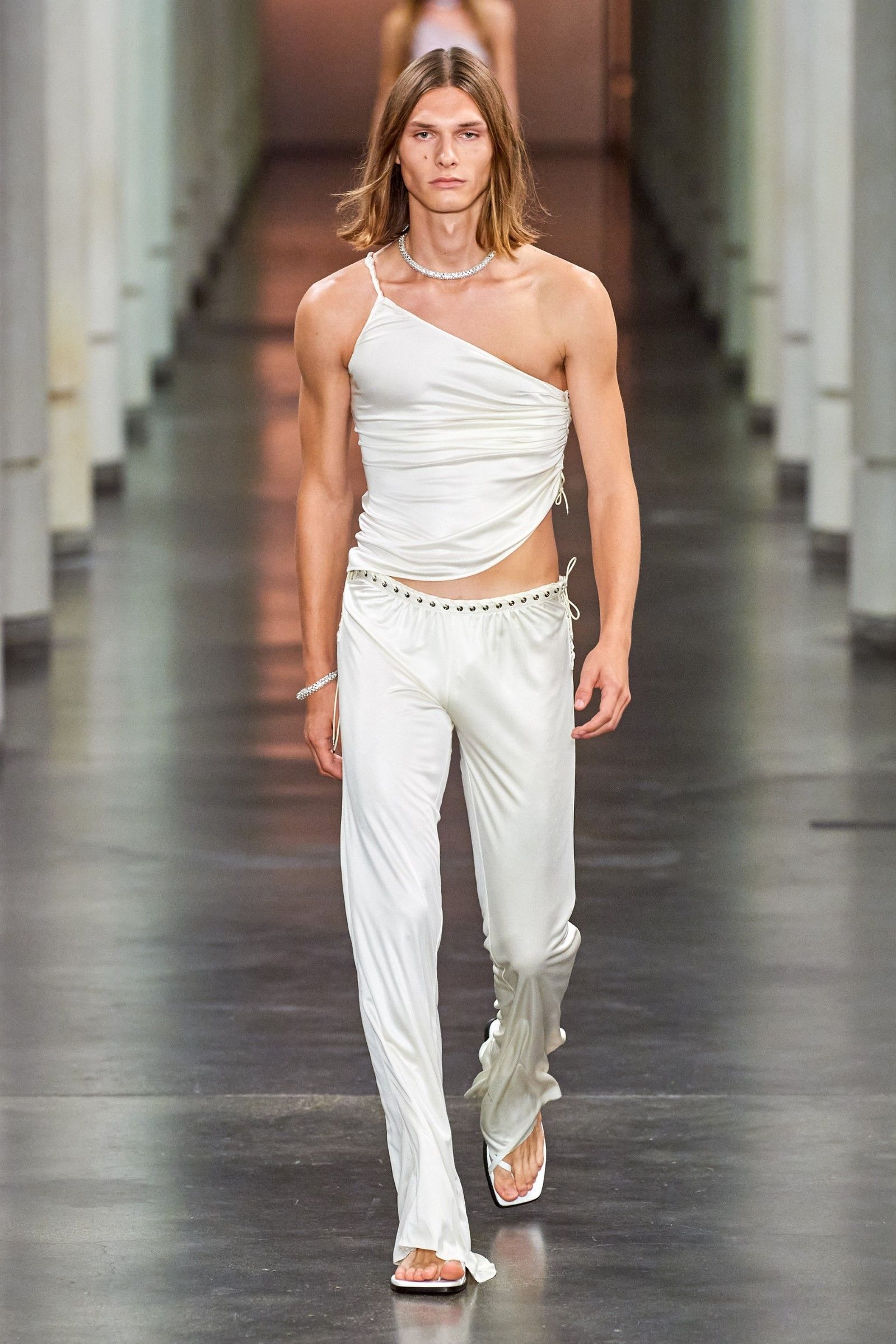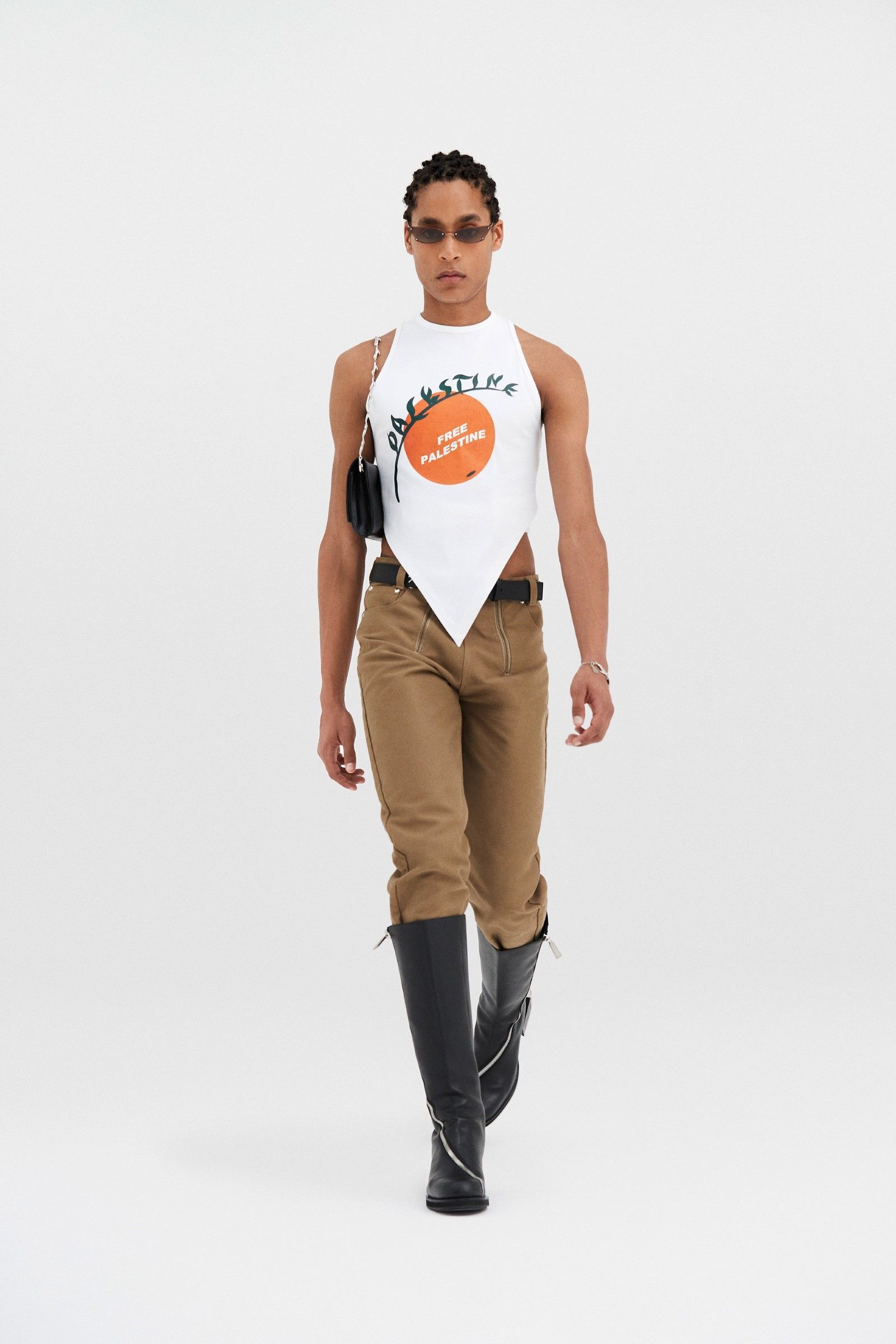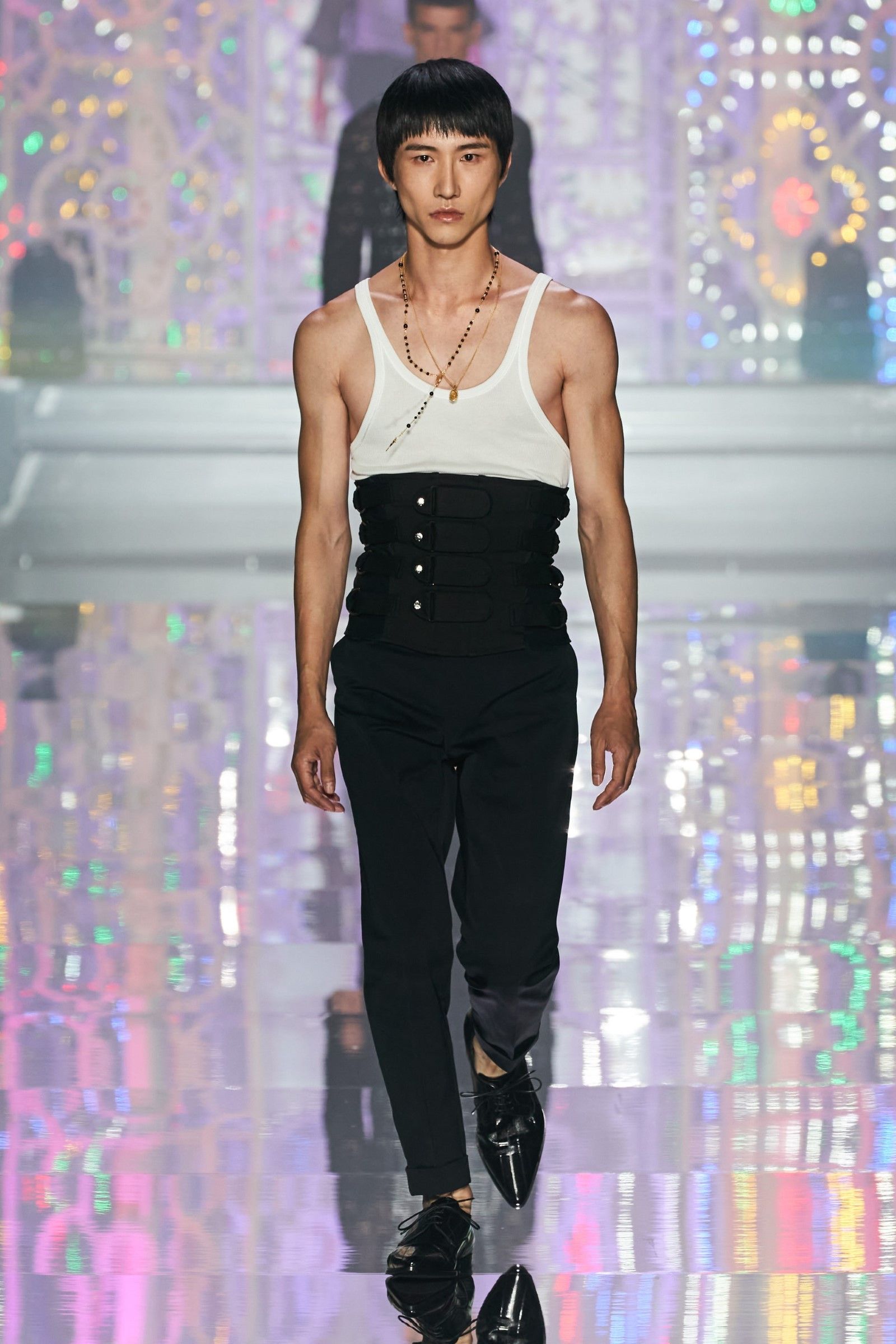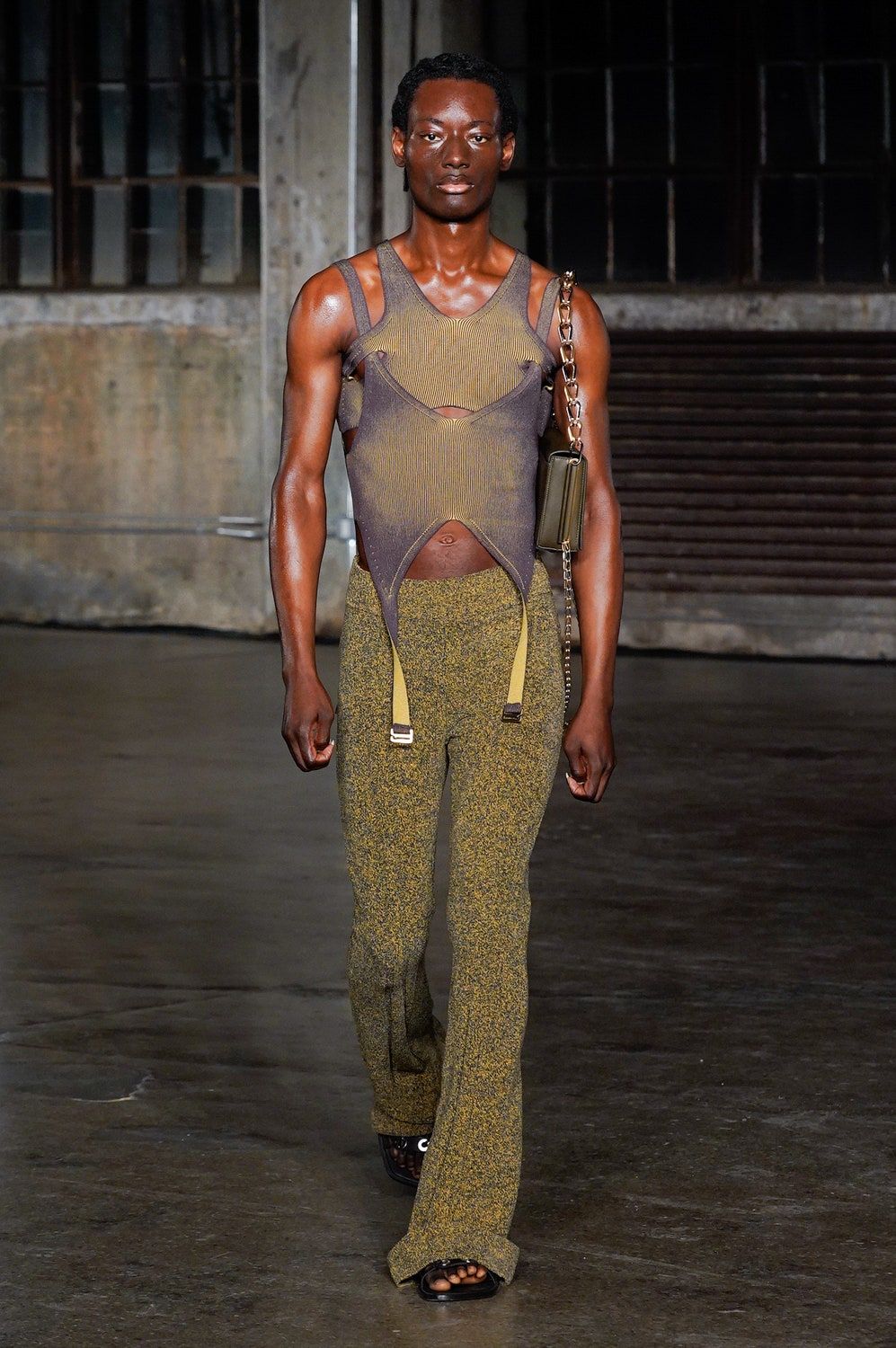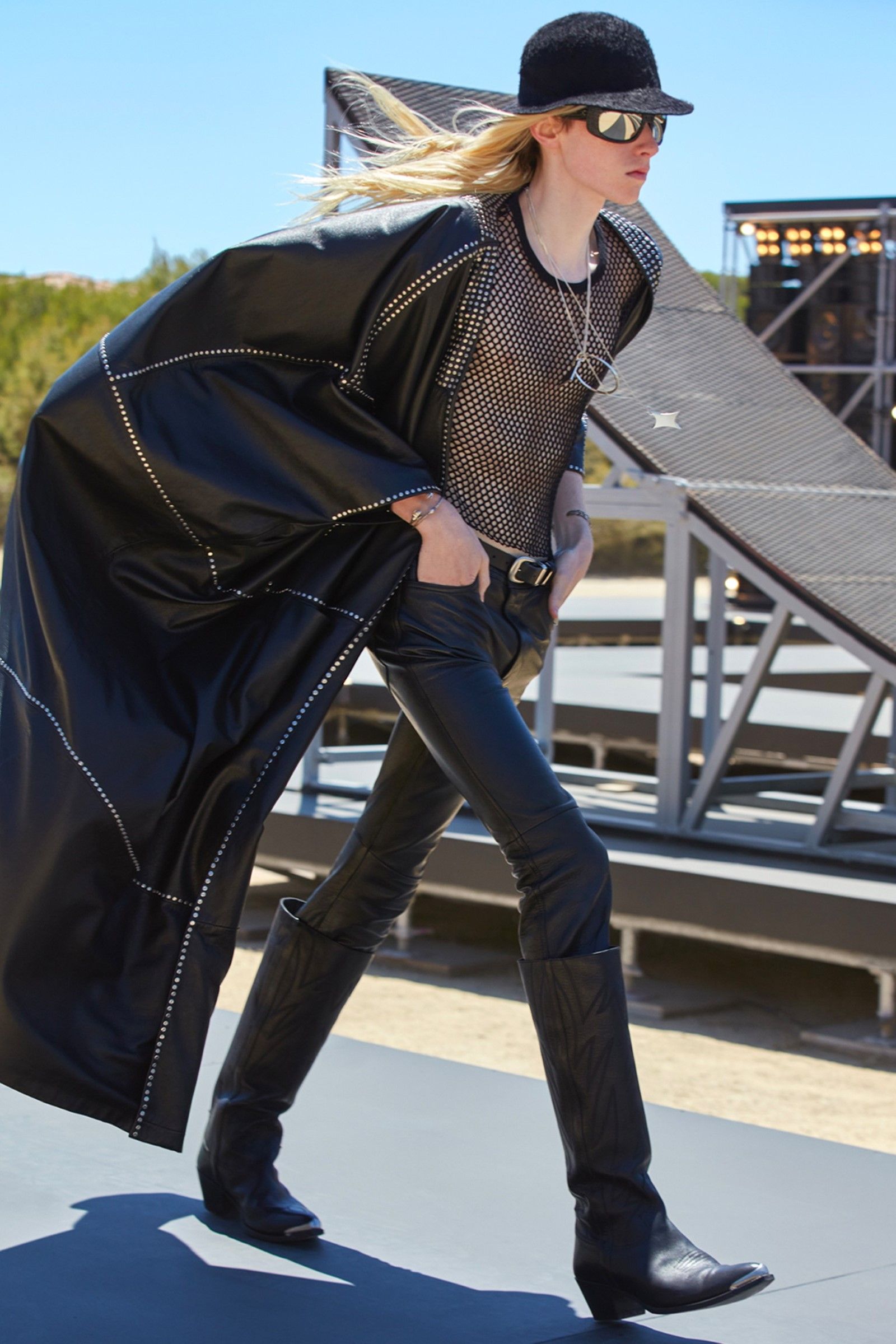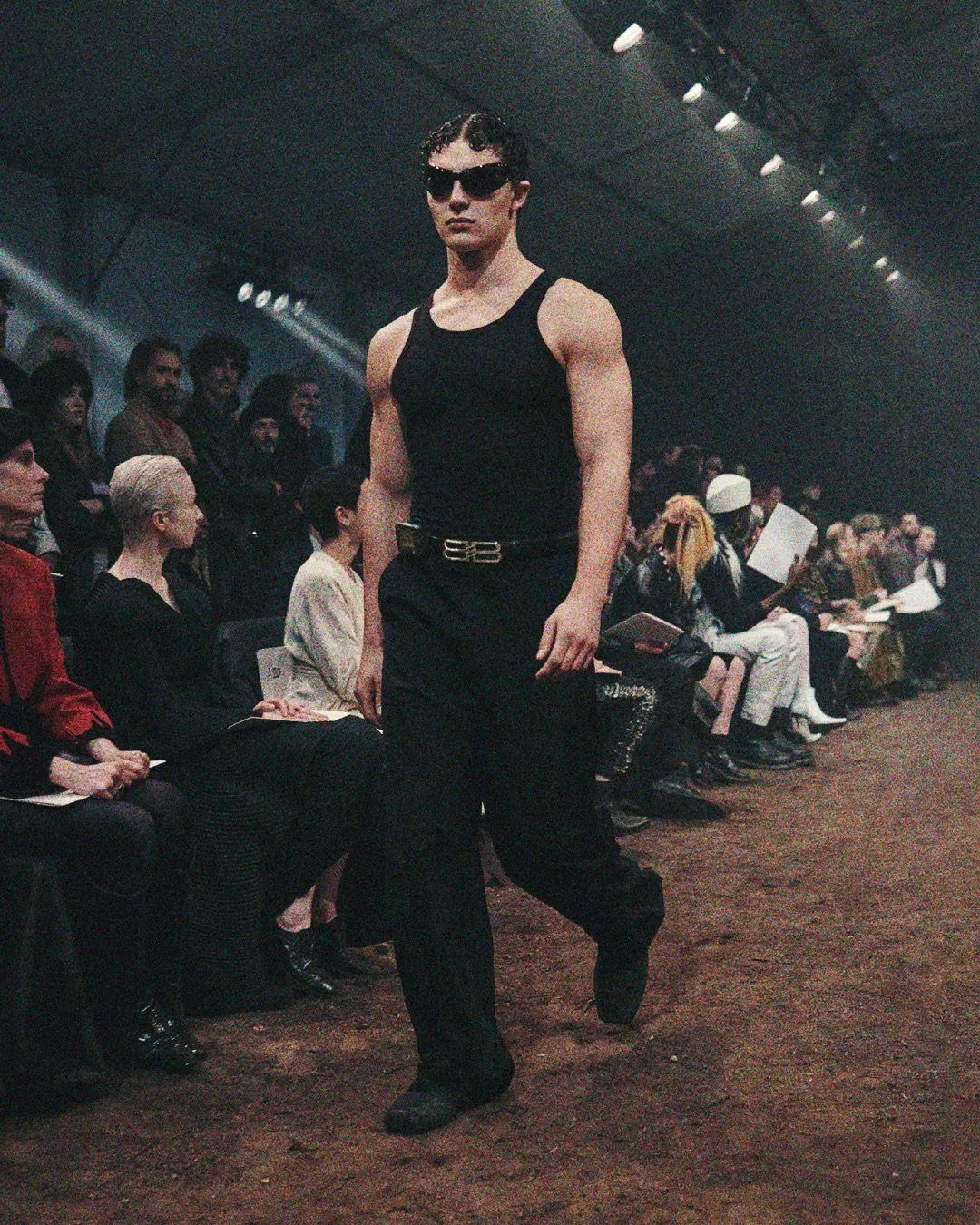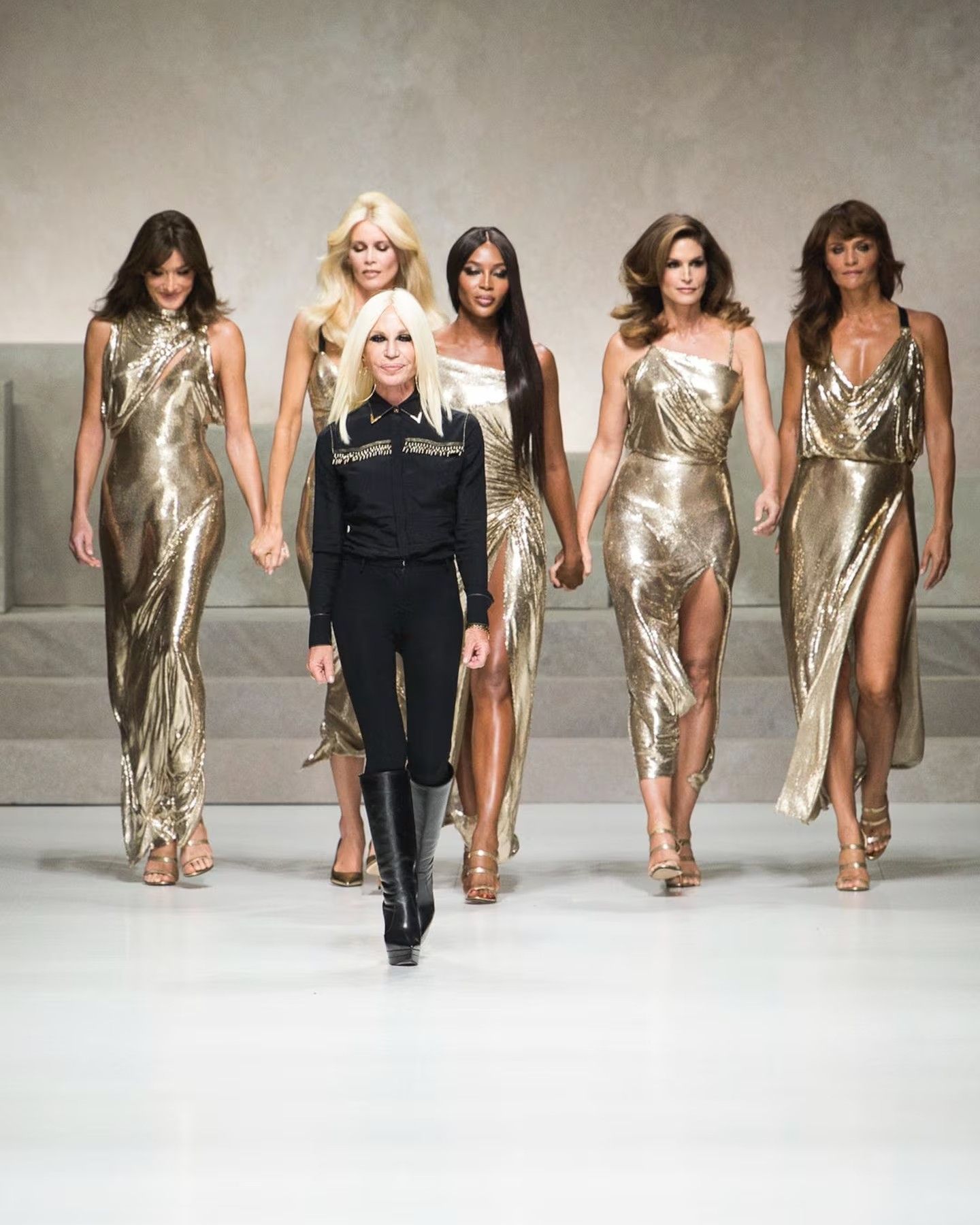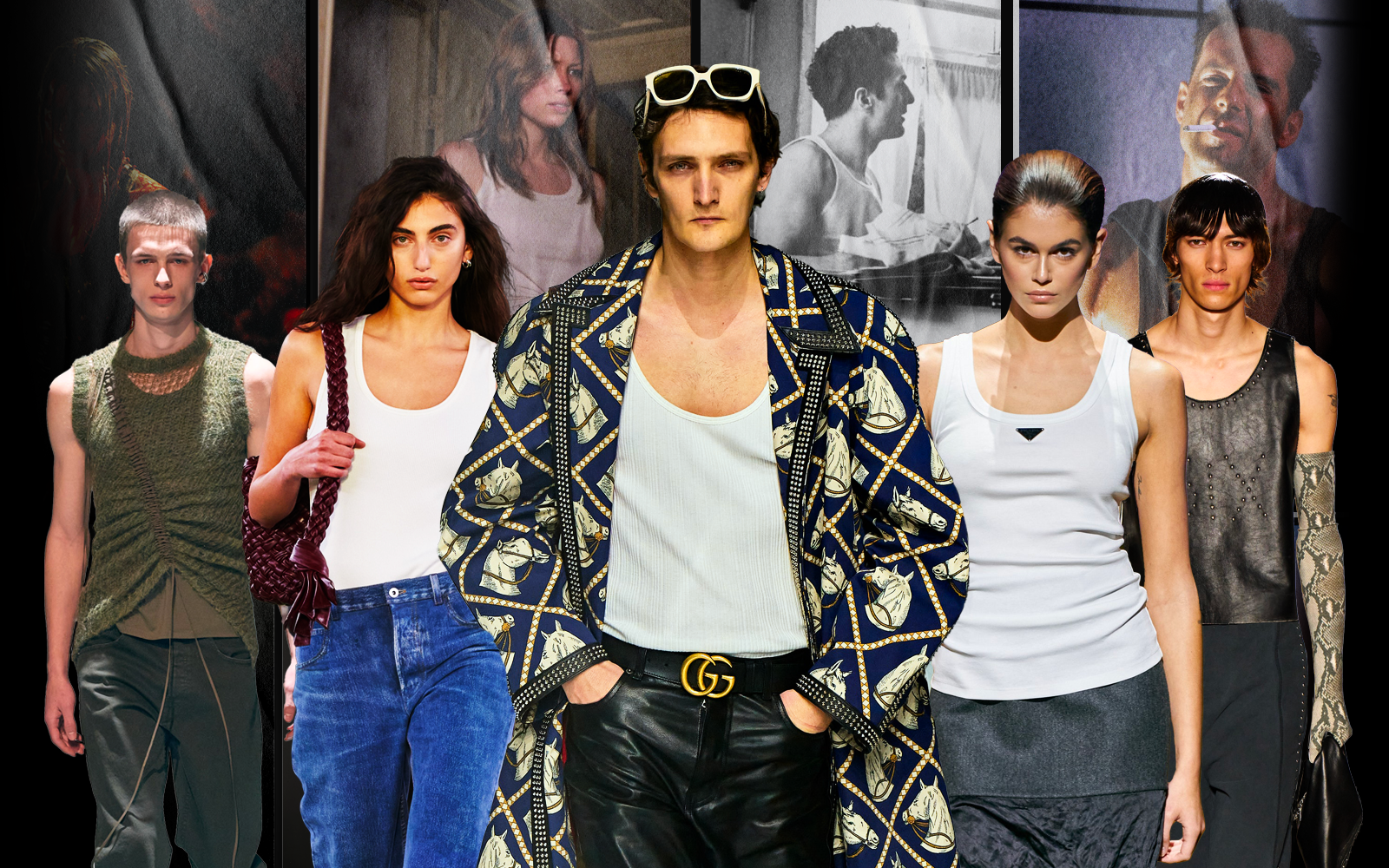
The infinite appeal of the tank top Uncouth uniform of the everyman or sexiest piece of clothing ever?
The tank top that was discussed the most, in Italy, at the beginning of the year was that of Giovanni Truppi in Sanremo who, answering Amadeus who asked him why he wore it, told how the tank top was his stage uniform since its beginnings. But in reality, off the stage of Sanremo and on the catwalks, many have been seen during the last Milan Fashion Weeks: from those in the luxury version of Prada and Bottega Veneta, to those used as a layering element seen by Gucci and Sunnei, passing through the experimental versions of Diesel, Ambush, MSGM, MM6 Maison Margiela. In times of genderless fashion, normalization of sexyness and (why not) of ravenous institutionalized narcissism, the tank top has become a blank canvas to tell the body and male and female identities under new and richer perspectives by many designers who have from time to time dug the different cultural facets bringing it further and further away from its original existence as a humble underwear garment.
The merit of having brought the tank top on the catwalk is attributed to Dolce & Gabbana, who included it in some looks of their SS91 men's collection making it appear the year before in the brand's FW90 campaign. With them he questioned and overturned the stereotype of the Italian man to whom the idea of the tank top was linked, making it brazen and attractive. If Dolce & Gabbana told of the tank top in the Italian collective consciousness and from the celebrated Milanese catwalks, in the following years this appeared in its sense of countercultural, informal and liberating garment, both in the collections of Ann Demeulemeester, who included one in his SS97, and in the SS98 collections of Helmut Lang, Maison Margiela and Raf Simons.
The leap in meaning took place a few years later at the hands of Lang who, at New York Fashion Week, included in the SS04 collection a series of asymmetrical tank tops that maliciously revealed the nipples of the models – anticipating all the genderless / fluid tank tops we see today. But as creative and brilliant as they were, these '90s designers simply recorded and sanctioned a change that had already occurred in popular perception – namely, the status of sex symbol that the tank top had acquired practically since the '50s with A Streetcar Named Desire, in which Marlon Brando wore a filthy and ruined one that symbolized both the low social status of his character and hisnbestial sensuality. The fact that a man was openly seen as an object of sexual desire was not even such a huge novelty: after their first "scandalous" appearance wearing the UK Women's Olympic swimming team at the 1912 Olympics, the men's tank top took the form of a swimsuit, arousing natural associations with a macho imaginary. Even in the following years, at the cinema, the tank top never deviated from the classic idea of machismo, appearing in Raging Bull, Rambo, Die Hard or Wolverine, but also communicating the strength and determination of female characters in adventure and horror cinema appearing very often on the so-called final girl. The trope's cultural origins, anyway, can be traced back to the South of Italy as explaind in the book Manly Manners, where author James Wayne explains:
«But it was really in regions of southern Italy, such as Napoli and Sicily, where warm weather, economic modesty, and Italian machismo converged, that the tank top truly began its evolution from underwear to outerwear. In southern Italy, a man with few shirts was better off saving them for Sunday Mass, work, and special occasions. [...] For the typical southern Italian man, then, regardless of his physique, the tank top is part of his sartorial culture. […] In America, the tank top-wearing man-Italian or otherwise-epitomized the Italian "Guido": poor, rough around the edges, and bodacious—even if admittedly sexy».
As a leader who questioned the very concept of formality and social class, but at the same time revealed and in some ways sexualized the male body, the popularity of the tank top cemented itself over the decades: it was adopted in the wardrobe of punks as a leisure and anti-bourgeois garment, it became a staple of the increasingly emerging LGBTQ+ culture appearing, for example, among the fixed uniforms of the Village People; finally, along with basketball jerseys, he also found popularity in the hip-hop world, then entering the vocabulary of streetwear when the world of rap and fashion collided, as well as spreading into the hipster sub-culture. Today, its presence is so endemic in the collective consciousness that its appearance in the pret-a-porter collections is almost fixed, indeed, in the most recent collections seen on the catwalk the compositional framework of the tank top has been abstracted, making way for the hyper-geometric variations signed by Miuccia Prada and Raf Simons, from the surreal versions of Jonathan Anderson or the androgynous ones of Rick Owens, Celine, GmbH or Ludovic de Saint Sernin.
The thing that surprises most about the cultural story of the "tank top", however, is that if many of the garments born as symbols of countercultures appear very normal today, the tank top has still maintained such a strong connotation that seeing it worn by a Sanremo singer makes it more sensational than Blanco's transparent shirt or the naked torsos of singers like Achille Lauro, the Maneskin or Rkomi. According to Wilde, to get consideration you have to entertain the public or scandalize them – a bit like Giovanni Truppi's tank top. A biker jacket, a white t-shirt or a hair dye, after all, today no longer scandalize anyone.










































